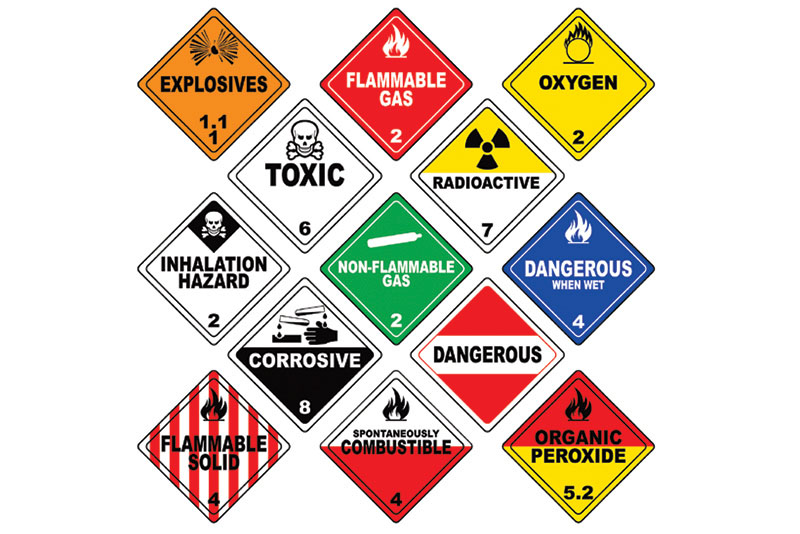Moore on Pricing: Transport regulation update
Shippers and carriers involved in hazmat—and in many areas regulated in transportation and distribution—need to be periodically updating themselves on any additional changes.
Despite the pronouncements from Washington of less regulation for businesses, in transportation there continues to be activity at all levels of government—both domestic and international.
At the top of the news is the United Nation’s International Maritime Organization (IMO) mandate for cleaner fuels by 2020. The result will be much cleaner air above the oceans, but it’s going to come at a price to freight transportation.
Back home in the United States, the Department of Transportation’s (DOT) many Title 49 penalties have been increased and were effective as of August 2019. Joe Tillman, lead hazmat instructor at the Logistics Training Center, explains the changes: “Minimum penalties related to training are now $493 with a maximum in case of serious injury or death being $191,316. Remember that penalties may impact both shippers and carriers, especially if the carrier does not have an adequate inspection program in place.”
If a hazmat package is shipped and transported by a carrier when it’s not hazmat ready, the carrier can be fined as well as the shipper. “Both parties need to be satisfied that the other is in compliance,” states Tillman. Penalties can be assessed at both the individual and corporate level.
In addition, shippers have to worry about non-compliance fees coming down from some carriers. Beginning in June 2019, FedEx started issuing a $350 penalty charges to shippers who move a hazmat or dangerous goods package through FedEx that does not meet compliance per FedEx. It’s time to check to see if your carrier’s rules and restrictions are tighter than DOT regulations.
Hazard label requirements continue to bedevil both shippers and carriers. After the 2016 election, the President issued an executive order that froze all final and interim rules from being implemented in the United States. This freeze locked in a new rule that DOT had planned to withdraw regarding the redesign of labels.
By April 2018, the international standards were changed to not require the new hazard labels design with a 2-millimeter (mm) thick inner border. DOT stated that they planned to address this issue in 2018, but they have yet to remove the 2-mm requirement—thus, we’re out of sync with the international standards. Shippers must attach labels and supply placards—so make sure you’re compliant.
Also, Mexico has issued an interpretation through the Council on the Safe Transport of Hazards Articles (COSTHA) of hazard label placement that will affect road and rail shipment of hazmat packages. With that in mind, Mexico now requires that all hazard labels are placed diamond-shaped as they appear on the package. The United States, as well as other countries, allows hazard labels to be placed square-shaped if packaging dimensions are inadequate.
Tillman suggests two strategies for shippers moving hazmat into Mexico. First, he recommends using reduced-size hazard labels, which U.S. and international regulations allow. A second strategy is to use packaging of adequate size to place the required hazard labels diamond-shaped.
These are only a few of the changes that have taken place in recent months. Shippers and carriers involved in hazmat—and in many areas regulated in transportation and distribution—need to be periodically updating themselves on any additional changes. The fines can be painful, but the loss of a customer or an operation can be deadly to business.

Article Topics
Motor Freight News & Resources
Q1 U.S. Bank Freight Payment Index sees shipment and spending declines 2024 State of Freight Forwarders: What’s next is happening now What’s next for trucking? TIA rolls out updated version of framework focused on fighting freight fraud National diesel average is down for the third consecutive week, reports EIA Shipment and expenditure decreases trend down, notes Cass Freight Index March trucking tonnage trends down, reports ATA More Motor FreightLatest in Logistics
April Services PMI contracts after 15 months of growth, reports ISM 2023 industrial big-box leasing activity heads down but remains on a steady path, notes CBRE report U.S. rail carload and intermodal volumes are mixed in April, reports AAR Q1 U.S. Bank Freight Payment Index sees shipment and spending declines S&P Global Market Intelligence’s Rogers assesses 2024 import landscape Pitt Ohio exec warns Congress to go slow on truck electrification mandates Q1 intermodal volumes are up for second straight quarter, reports IANA More LogisticsSubscribe to Logistics Management Magazine

Find out what the world's most innovative companies are doing to improve productivity in their plants and distribution centers.
Start your FREE subscription today.
May 2024 Logistics Management

Latest Resources
















